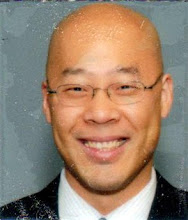Some parts of Beijing are still pretty old, and have not been touched by the rebuilding frenzy. They may have acceded to the beat of the commercial pulse, but they are nevertheless old homes. I remember reading that there was much concern that too much of the old housing around the Forbidden City was being seized for renovation. Still, some samples of older structures remain, and I recognized them from having seen similar buildings in Taipei before.
The southern tower of Tiananmen Square (天安門廣場) is very ornate ...
... and it faces the Chairman Mao Memorial ...
... behind which is the Hall of the People's Heroes.
The rest of the square is huge. The next three images show how far the actual Gate of Heavenly Peace (天安門) really is.
At least the guard here, unlike the ones on the square, was almost as rigid as a Beefeater. I'd seen similar guards in Taipei's public monuments as well. The guards on the square itself in Beijing couldn't help turning their heads all the time to indulge in a bit of people-watching while on the job; I was far less than impressed with them.
This is the Meridian Gate, one of the main gates that leads to the main courtyard and throne room. The first picture doesn't give a great idea of just how huge the walls are, but the one below gives an idea of scale.
The audio tour is very modern: The audio recording for specific sections switches on when the visitor is near that section. Location is monitored through a GPS unit in the device, which includes a map.
The main courtyard and throneroom are stupendously large. There's no doubt that the emperor intended to intimidate his visitors.
These dragon heads are in the rear part of the main throneroom; they are reminiscent of European gargoyles.
This cauldron, and others like it, are not just for decoration; they hold water for purposes of extinguishing fires, and in the winter, wood and coals are burnt in slots in the stone platforms these cauldrons rest on, so that the water does not freeze.
This posterior courtyard leads to the Inner Forbidden City, where the residential palaces were.
The north or posterior side of the relatively smaller rear throne room features stone carvings of dragons cavorting in the clouds. Exorbitant sums were spent bringing the source stone from faraway quarries. Several stone carvings came together to remind visitors that the throne room sits in the clouds with the dragons.
This lion is one of a pair guarding the entrance to the residential palaces.
Some of the side palaces featured models replicating scenes from scroll paintings.
If I heard the audio recording correctly, only the best concubines were able to climb up to this pavilion.
The last Ming Emperor hung himself from the eaves of the central of three pavilions on the man-made hill. Why? The Manchurians, who would establish the Qing (or Ch'ing) Dynasty, had invaded, and breached the Forbidden City.
To see everything in the Forbidden City, the visitor is advised to reserve at least a full day.






















No comments:
Post a Comment